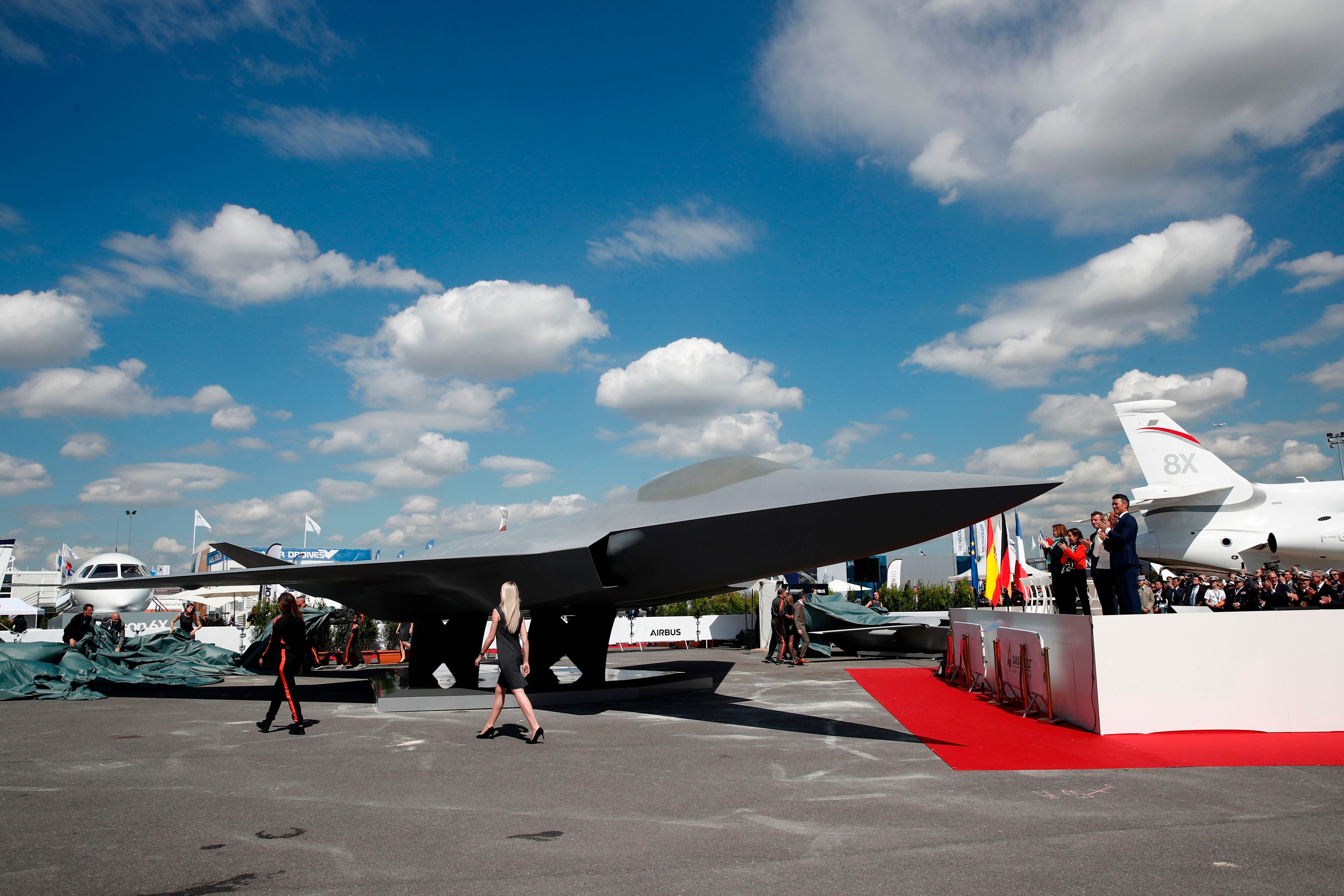PARIS — Airbus is banking on its fleet of tankers and cargo hauler to test the initial building blocks of a novel data network meant to connect all elements of the Future Combat Air System, according to company officials.
The aircraft are suited for that role because they have the space to accommodate experimental equipment, and the tests offer user nations the option of using the aircraft in a new role, executives told Defense News at the Paris Air Show.
The push to field an interconnected sensor suite is a central theme of the Franco-German-Spanish fighter program, which kicked into higher gear earlier this week with the blessing of French President Emmanuel Macron and the three partner countries’ defense ministers.
Part of the sixth-generation flavor envisioned for the FCAS program stems from the idea that a smattering of drones, sensors and manned aircraft would tackle missions together under the direction of an intelligent data backbone.
“The level of connectivity is much greater than in current systems,” David Kingdon Jones, head of airborne connectivity, communications, intelligence and security at Airbus, told Defense News in an interview.
He said engineers are no longer treating connectivity as a mere must-have to make network elements talk to one another. Instead, they believe there is a new level of capability to be unlocked if FCAS nodes can push information securely and intelligently to where it is needed in combat.
RELATED

“Connectivity currently is mostly about point-to-point,” Jones said. Infusing a true network character into the future aerial weapon, on the other hand, will bring new gains so long as the necessary breakthroughs can be achieved in increased bandwidth and security, he added.
Airbus recently announced the completion of a test series with a multirole tanker transport (MRTT) plane over Spain. The demonstration is part of the company’s effort to field what executives have dubbed the “Network for the Sky,” or NFTS. It combines communications nodes from space all the way down to soldier radios, plus 5G mobile traffic, and — in a couple of years — laser connections.
Another round of tests featuring the aircraft is planned for late 2020 or early 2021, according to Didier Plantecoste, head of MRTT and Airbus derivatives programs. The company plans to incrementally phase in new networking capabilities in what he called “baby demonstrations.”
For the most recent test in May, engineers established a multi-Mbit/s (megabit per second) data pipeline connecting a soldier on the ground with a fighter jet launched to obtain imagery of a nearby target area, which then fed the data through a chain involving the MRTT plane, a satellite layer and ground station in North America, and back to the air operations center in Europe.
According to Jones, that level of connectivity so far has been achieved only by American forces and is new for Europeans. In particular, achieving a degree of network self-management, such as selecting a fallback connection if one strand breaks down, is new for forces here, he added.
Officials acknowledge their plan for an intelligent, aerial data network has a similar ring as the U.S. military’s idea of network-centric operations that was all the rage in 1990s and the early days of the Iraq invasion. “It’s very, very similar,” Jones said.
The theory has fallen somewhat out of favor since then because American forces were so enamored with the idea of controlling the battle via sophisticated networking equipment that the advent of a decidedly low-tech weapon, the improvised explosive device, caught them flat-footed.
Sebastian Sprenger is associate editor for Europe at Defense News, reporting on the state of the defense market in the region, and on U.S.-Europe cooperation and multi-national investments in defense and global security. Previously he served as managing editor for Defense News. He is based in Cologne, Germany.








